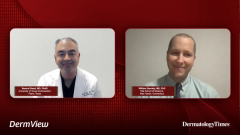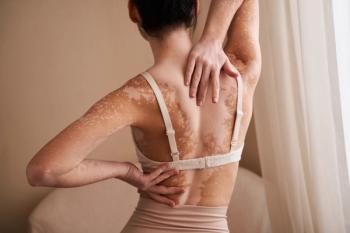
Treatment for Vitiligo: Options and Unmet Needs
A brief review of the treatment armamentarium for vitiligo, as well as the prevalent unmet needs in that setting.
Episodes in this series

Transcript:
William Damsky, MD, PhD: I’d like to ask you about how individual variability in presentation, whether it’s extent or location of vitiligo, impacts treatment and how you walk patients through that, and what your decision-making process is?
Seemal Desai, MD, FAAD: It’s not a one-size-fits-all disease. I think you would agree. One thing that I will say is that this is a multimodal therapeutic approach. It can be a challenge with patients because some don’t want to use sticky ointments. Some can’t come in 3 times a week to get light box therapy, or twice a week to get targeted excimer laser. Some don’t want to take oral antioxidants. Some don’t want to take the steroids; they’re worried about immunosuppression, especially during COVID-19. All those things I agree with. I don’t do PUV-A [psoralen and ultraviolet A] therapy anymore. I don’t do any psoralen plus UV-A. I do use narrowband [UV-B phototherapy] extensively, and I also use targeted excimer phototherapy. We have both of those units in our practice. Topical calcineurin inhibitors and topical steroids make up a large workhorse part of my practice, especially before the advent of the topical JAK inhibitors, which I use a lot, off label. I’m excited that hopefully soon, we’ll have those FDA approved, potentially.
With topical corticosteroids and calcineurin inhibitors, typically, let’s say someone has truncal involvement, I used to pulse those every 2 weeks. I’d use one twice a day for 2 weeks, then the other, and go back and forth. And that also limits the effects, potentially, of steroid-induced atrophy and telangiectasia from the topical steroid. If I have a patient who’s got aggressive new areas on the face, I don’t hesitate to use a stronger steroid on the face for a short period. You want to be aggressive. Yes, there could be adverse effects, but you counsel and you watch the patients. Using a stronger steroid on the face, which typically we’re all trained not to do, but if you need it, you use it. It works and it helps, and we want to make sure we’re doing that. Lastly, I would say oral antioxidants are a big part of my practice, particularly polypodium leucotomos, which has been shown in several studies to increase the rates of head and neck repigmentation when on narrowband UV-B. And alpha-lipoic acid and vitamin C-, vitamin E-based oral antioxidant therapy, I use very frequently as well for similar reasons.
William Damsky, MD, PhD: Thanks for that great overview. It’s so helpful. I think that this is a nice segue into the next part. What are the challenges and unmet needs in vitiligo, and where are things headed?
Seemal Desai, MD, FAAD: I think you and I know exactly the answer to that, which is the unmet needs are that we need an FDA-approved therapy, first and foremost. I think the second unmet need is that we need more data and we need more research. I will mention 2 important scientific tidbits that I know you and I both are excited about. I’ve heard you speak on the JAK inhibitors before. There’s a lot going on. I was at the New England Dermatological Society [NEDS] meeting with you virtually recently where you spoke, and it was a really great meeting…put together along with the NEDS board. I know it came up that there’s more interleukin and molecular basis of understanding some of these diseases.
For example, IL-15 [interleukin-15] signaling is an exciting new area of research because IL-15 is thought to be the driving influence that keeps those resident T-memory cells hidden in the skin so that even when you repigment, the color can be lost again because you’ve got these annoying pesky cells that are clingy and lurking in the background. Or CXCL10,which has been shown to be a potential predictive biomarker for vitiligo. What if one day we have a blood test we could draw and tell our patients, “Hey, your titer’s really high. Your vitiligo is likely going to spread within the next 6 months to a year. I’m going to keep you on systemic steroids longer or at a higher dose.” I’m really excited about that.
Transcript edited for clarity.
Newsletter
Like what you’re reading? Subscribe to Dermatology Times for weekly updates on therapies, innovations, and real-world practice tips.






















